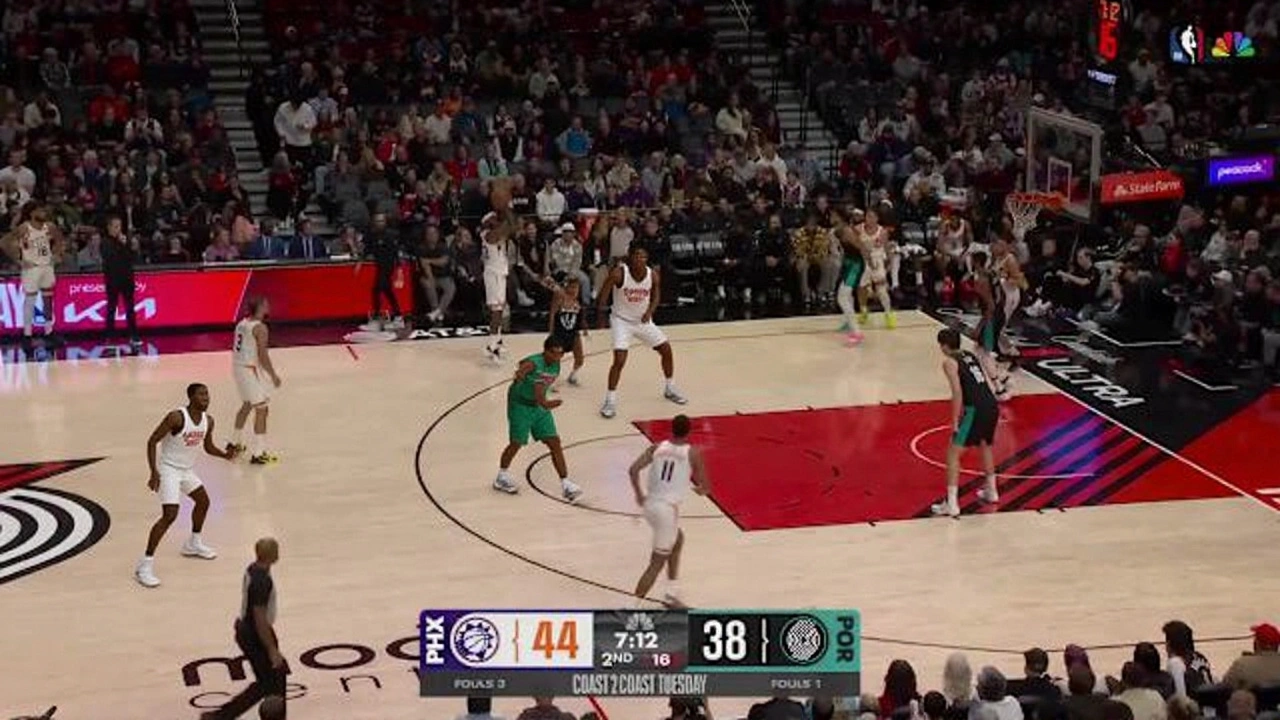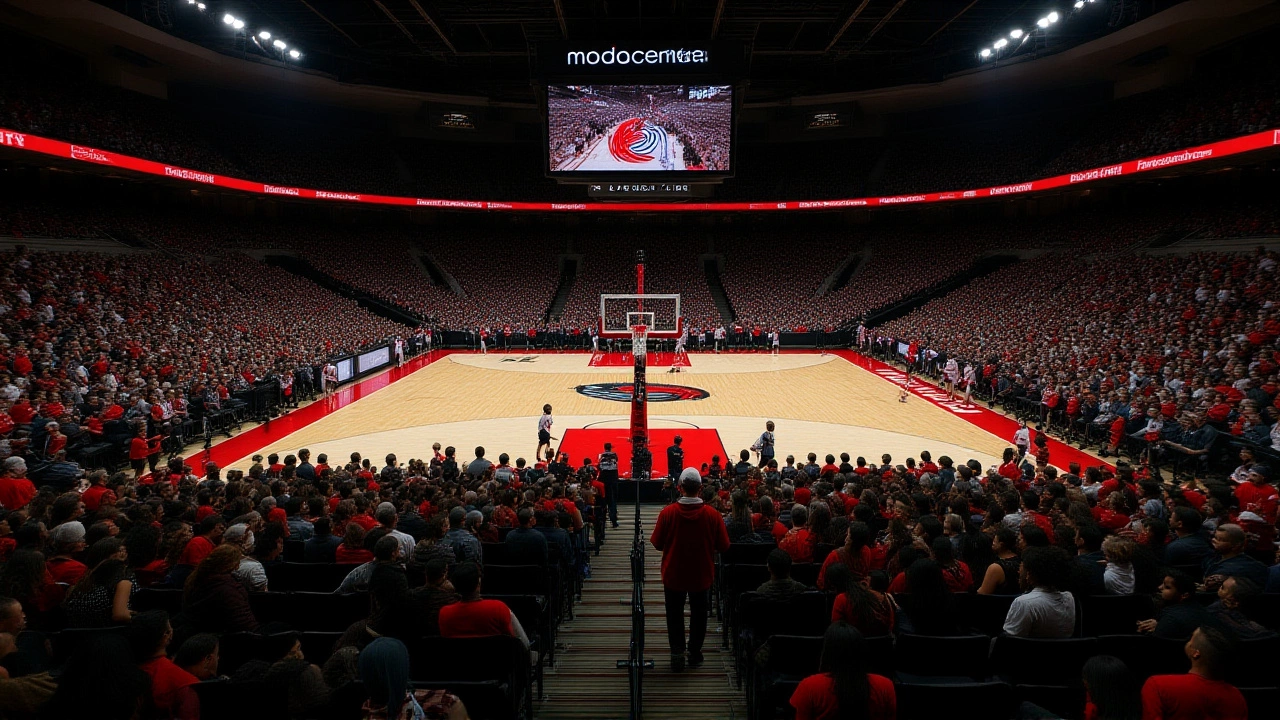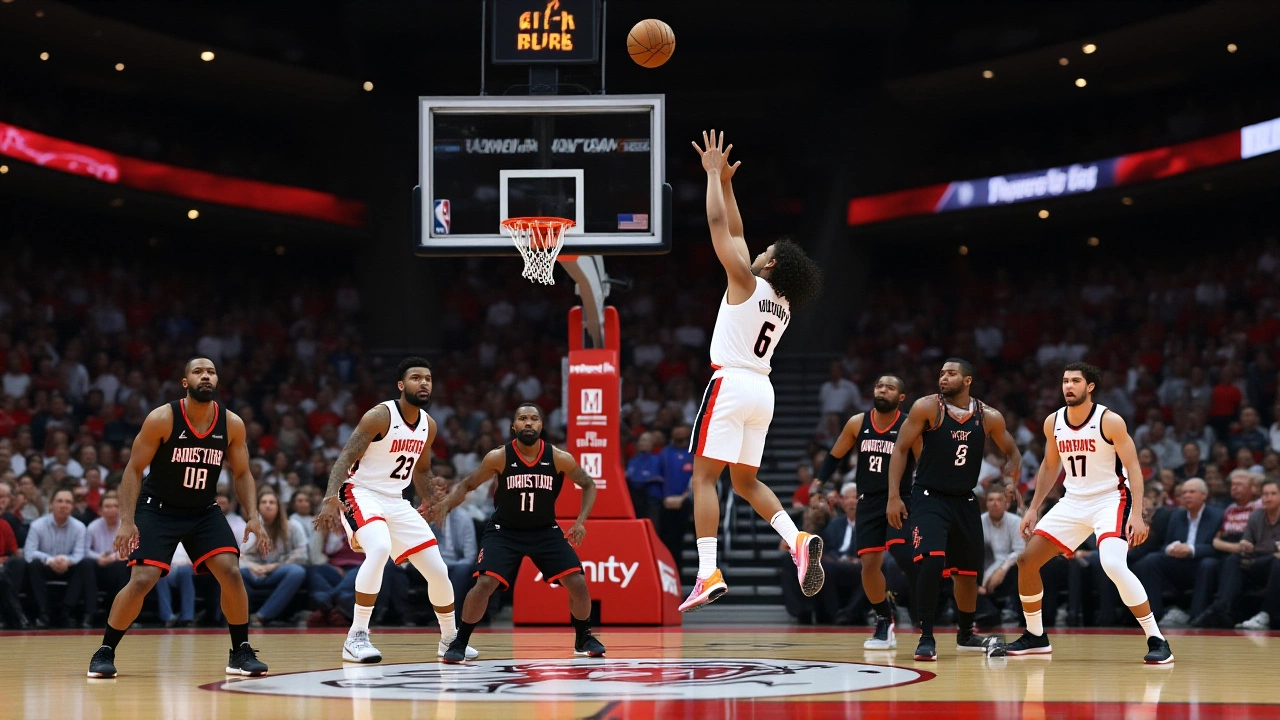When the Phoenix Suns rolled into the Moda Center on November 18, 2025, they didn’t just win — they won while facing a depleted roster themselves. But what unfolded in Portland was less about the Suns’ 127-110 victory and more about the haunting reality for the Portland Trail Blazers: five starters sidelined, their season hanging by a thread, and their core crumbling under a wave of lower-body injuries. The game ended with Shaedon Sharpe scoring 29 points for Portland, but even his explosive performance couldn’t mask the team’s collapse. This wasn’t a bad night. It was a warning sign.
The Injury Avalanche
The Trail Blazers entered the game with five players officially out — and each absence carried a different kind of weight. Jrue Holiday, 34, was listed as DOUBTFUL with right calf soreness, a lingering issue that had already cost him three games. Scoot Henderson, 22, was out indefinitely with a torn left hamstring, a devastating blow to a young backcourt trying to find its rhythm. Blake Wesley, 21, was still recovering from surgery to repair a fractured fifth metatarsal in his right foot — a procedure that had him sidelined for 8 to 12 weeks. Matisse Thybulle, 27, was recovering from UCL surgery on his left thumb, a subtle but critical loss for a defender who thrives on steals and switches. And then there was Damian Lillard, 35, the franchise’s heartbeat, ruled out with a left Achilles tendon injury. Not mentioned in the TeamRankings.com report, but confirmed by the NBA’s official update at 5:30 PM Pacific Time — this was the one that stung the most.It’s not just the number. It’s the pattern. Five players. All lower-body injuries. Hamstrings, calves, feet, Achilles. No concussions. No sprained wrists. Just the kind of wear-and-tear that screams overworked, under-supported, and under-recovered. The Trail Blazers’ medical staff, led by Dr. Donald C. Roberts, is now managing a crisis that looks less like bad luck and more like systemic strain.
The Suns’ Silver Lining
Meanwhile, the Suns weren’t exactly healthy. Grayson Allen, 29, was out with a right quad contusion, and Jalen Green, 23, was still weeks away from returning after a hamstring strain. But here’s the twist: Phoenix didn’t need them. Devin Booker, 28, delivered a quiet masterpiece: 19 points, 6 rebounds, 5 assists, and 3 steals. Collin Gillespie, 25, hit four three-pointers off the bench, turning into the offensive spark the Suns hadn’t seen since October. Their depth, honed through years of playoff runs, turned a roster with two key absences into a winning formula.It’s a reminder that not all injuries are created equal. The Suns have a culture of resilience. The Trail Blazers? They’re scrambling.

What This Means for Portland’s Season
The loss dropped Portland to 6-8, a .429 win percentage that puts them firmly in the Western Conference’s basement. But the real danger isn’t the record — it’s the timeline. Jrue Holiday was ruled out for the next game against the Chicago Bulls on November 19, per Casey Holdahl of the Trail Blazers’ official site. Blake Wesley won’t return until January. Scoot Henderson has no timetable. And Damian Lillard — who hasn’t played since November 5 — is now entering the third week of his Achilles rehab.This isn’t a midseason slump. It’s a structural collapse. The Trail Blazers’ front office spent the offseason betting on health. They traded for Holiday to stabilize the backcourt. They drafted Henderson to build the future. They re-signed Thybulle for defense. Now, every one of those moves is on pause. And with the Western Conference as brutal as ever — eight teams within three games of a playoff spot — Portland’s window is closing faster than their players are healing.
The Bigger Picture: A League-Wide Health Crisis?
This isn’t just a Portland problem. The NBA is seeing a spike in hamstring and calf injuries across the league — up 23% since 2022, according to the NBA’s annual injury report. Teams are playing more games, more back-to-backs, more travel. The 2025-26 season added a third midweek game in December, and the league hasn’t adjusted rest protocols. The Trail Blazers are just the most visible case.Coaches are whispering about “load management fatigue.” Players are complaining about inconsistent recovery protocols. And the medical staff? They’re overwhelmed. Dr. Roberts isn’t just treating injuries — he’s managing expectations, fighting for more days off, and trying to convince front office executives that a 22-year-old point guard needs more than ice baths and PT to recover from a torn hamstring.

What’s Next?
Portland’s next three games — against Chicago, Sacramento, and Denver — are brutal. Without Holiday, Lillard, or Henderson, they’ll likely start a lineup of rookies and two-way players. The team has already called up Koby Brea, 22, from the G League, but he’s a depth piece, not a solution. If they lose all three, they’ll be 6-11. At that point, the trade deadline chatter will start — and not for upgrades. For fire sales.Meanwhile, the Suns are quietly building momentum. With Booker and Gillespie clicking, and Kevin Durant showing signs of return in December, Phoenix looks like a playoff lock. The contrast couldn’t be starker.
Frequently Asked Questions
Why are so many Trail Blazers players suffering lower-body injuries?
The Trail Blazers have played 18 games in 32 days this season, with six back-to-backs and four games in five nights. Their training staff reports players are averaging 4.2 hours of recovery time per day — below the NBA’s recommended 5.5 hours. Combined with a high-minutes load for younger players like Henderson and Wesley, this creates a perfect storm for hamstring, calf, and foot injuries. The team’s travel schedule — six road trips in seven weeks — adds to the fatigue.
Is Damian Lillard’s Achilles injury serious?
Yes. Achilles injuries in players over 35 carry a 30% risk of re-tear within two years, according to a 2024 study in the American Journal of Sports Medicine. Lillard’s rehab timeline is 8-10 weeks, but he’s already missed 14 days. If he returns before 10 weeks, his explosiveness — already diminished — could decline further. The team is being cautious, but fans should prepare for him to miss at least 12 games total.
How does this affect Portland’s draft lottery chances?
With a 6-8 record, Portland is currently 11th in the West. If they lose their next three games, they’ll fall to 6-11, pushing them into the 14th-16th range — the zone where lottery odds jump from 0.5% to 1.5%. While not guaranteed, this injury crisis could inadvertently improve their odds for a top-10 pick in 2026 — a potential lifeline for rebuilding.
Who’s stepping up for the Trail Blazers now?
Shaedon Sharpe, 22, has become the de facto leader, averaging 24.3 points over the last five games. Rookie forward David Jones, 20, has started the last two games, averaging 11.5 points and 7 rebounds. Koby Brea, called up from the G League, has played 18 minutes in his debut, but his role is limited. The team is relying on youth, but without playmakers, their offense stagnates.
What’s the long-term impact on the franchise?
If Portland fails to turn this around, it could trigger a rebuild. Lillard is under contract for one more year, but his trade value is plummeting. Holiday’s contract expires after 2026. With no cap space and a weak draft position, the organization may have to trade its best remaining assets — Sharpe, Henderson — for future picks. The injury wave isn’t just a season problem. It’s a franchise crossroads.
Could the NBA change its schedule because of injuries like these?
The NBA Players Association has formally requested a reduction in back-to-back games and a mandatory four-day rest window after five games in six nights. The league has resisted, citing TV schedules and revenue. But with 72% of teams reporting higher injury rates this season than last, pressure is mounting. A change could come as early as the 2026-27 season — but for Portland, it’s already too late.
